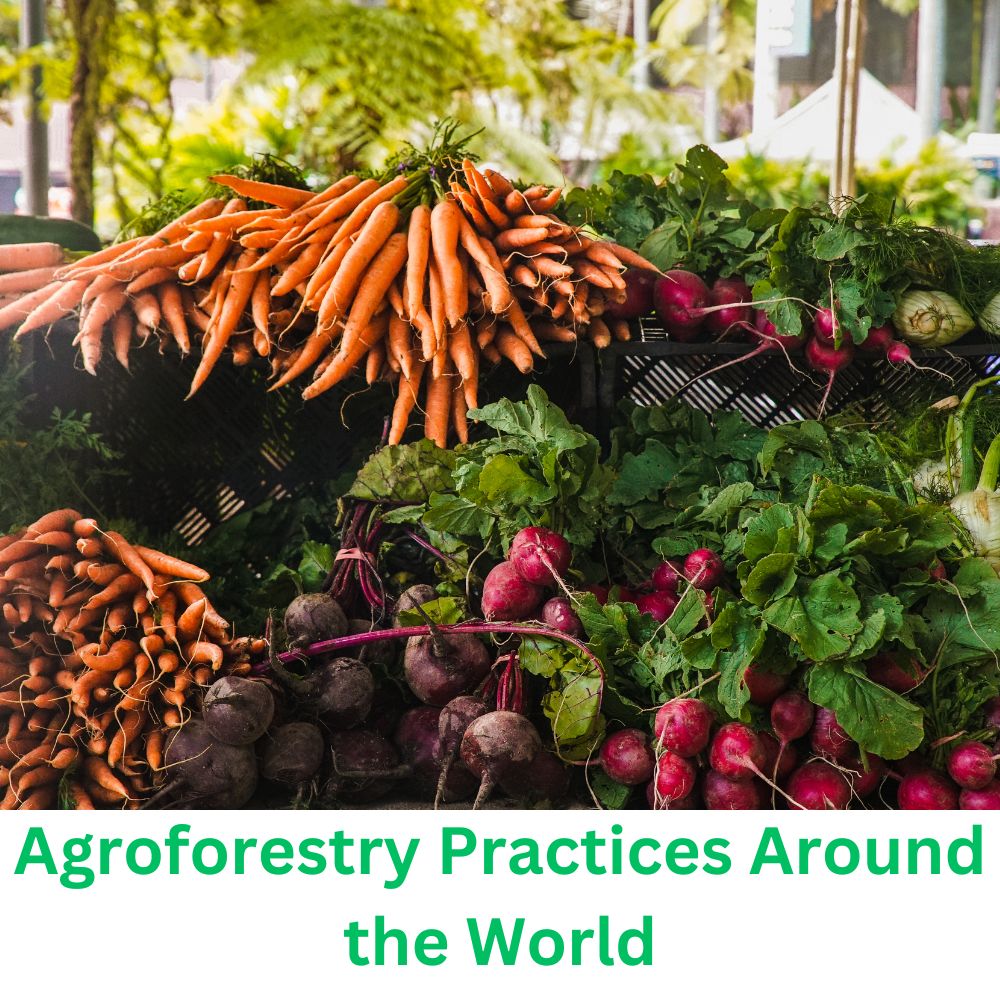Introduction
Agroforestry is a sustainable land management practice that transcends borders and cultures, offering innovative solutions to agriculture, environment, and livelihood challenges. This ancient practice, combining trees with crops or livestock on the same land, has evolved and adapted to diverse ecosystems and climates worldwide. In this article, we will embark on a journey to explore agroforestry practices from various corners of the globe, shedding light on the remarkable diversity and universality of this sustainable farming approach.
Africa: The Cradle of Agroforestry Innovation
Africa has a rich history of agroforestry practices deeply ingrained in its cultural and agricultural traditions. Notable examples include:
a. Taungya Systems (East Africa): In countries like Kenya and Tanzania, “Taungya” systems involve planting trees alongside crops like maize and beans. These systems provide firewood, timber, and shade while improving soil fertility.
b. Parklands and Fallow Systems (West Africa): In West Africa, parklands and fallow agroforestry systems feature scattered trees in cropland, providing shelter and enhancing nutrient cycling. Shea trees, for instance, are grown with millet and sorghum, offering fruits, nuts, and income opportunities.
Southeast Asia: Orchards of Diversity
In Southeast Asia, agroforestry takes on a different form, with an emphasis on orchards and diverse tree-crop combinations:
a. Homegardens (Indonesia): Indonesian homegardens showcase an intricate mix of fruit trees, vegetables, and medicinal plants. These systems contribute to food security and provide valuable non-timber forest products.
b. Rubber Agroforests (Thailand): Rubber tree cultivation often incorporates intercropping with crops like pineapple or cassava. This integration provides additional income and diversifies farm produce.
South America: The Amazon’s Agroforestry Marvels
South America is home to impressive agroforestry practices that support both livelihoods and rainforest conservation:
a. Brazil Nut and Cocoa Agroforestry (Brazil): Indigenous communities in the Amazon practice agroforestry by cultivating Brazil nuts and cocoa alongside other crops. This approach helps conserve rainforests, protect soil, and maintain biodiversity while generating income for local communities.
b. Coffee Shade-Grown Systems (Colombia): Coffee production in Colombia often involves shade-grown practices with trees like Inga and banana plants. This not only benefits coffee quality but also promotes biodiversity and soil conservation.
North America: A Modern Agroforestry Renaissance
In North America, modern agroforestry practices are gaining recognition for their environmental and economic benefits:
a. Alley Cropping (United States): Farmers in the United States have adopted alley cropping systems, planting rows of trees alongside crops like maize or soybeans. These systems help reduce soil erosion, improve nutrient cycling, and provide valuable wood products.
b. Riparian Buffer Zones (Canada): In Canada, riparian buffer zones with tree and shrub plantings along water bodies protect water quality, reduce soil erosion, and provide habitat for wildlife.
Europe: Silvopastoral Traditions
Europe boasts a history of silvopastoral practices that integrate trees with livestock grazing:
a. Dehesas and Montados (Spain and Portugal): Dehesas and Montados are extensive agroforestry systems where holm oak and cork oak trees coexist with livestock. These landscapes support traditional farming, biodiversity conservation, and valuable timber products.
b. Agroforestry in the Balkans (Serbia and Croatia): Traditional agroforestry systems in the Balkans incorporate fruit trees, vines, and livestock, preserving cultural heritage while providing food and income.
Oceania: The Pacific Paradigms
The Pacific islands have unique agroforestry practices adapted to their specific island environments:
a. Taro Lo’i (Hawaii): In Hawaii, traditional taro lo’i systems feature taro cultivation in terraced wetland areas. These systems incorporate wetland trees like banana, breadfruit, and coconut.
b. Forest Gardens (Papua New Guinea): Indigenous communities in Papua New Guinea practice forest gardening, where edible trees and understory crops thrive together. This approach sustains communities and conserves valuable genetic resources.
Common Principles Across Continents
Despite the regional diversity, agroforestry practices share common principles and benefits:
Diversification: Agroforestry promotes species diversity, providing resilience against pests, diseases, and market fluctuations.
Soil Improvement: Tree root systems enhance soil structure, nutrient cycling, and moisture retention.
Erosion Control: Trees prevent soil erosion through canopy cover and root binding.
Carbon Sequestration: Trees in agroforestry systems sequester carbon dioxide, mitigating climate change.
Livelihoods: Agroforestry generates income through timber, non-timber forest products, and diversified crops or livestock.
Biodiversity: Agroforestry enhances biodiversity by providing habitat and food for various species.
Conclusion
Agroforestry transcends continents and cultures, demonstrating its adaptability and universal relevance in addressing pressing global challenges. As we explore agroforestry practices from Africa to Oceania, it becomes evident that this sustainable farming approach is not only a solution to environmental and agricultural issues but also a reflection of human ingenuity and harmonious coexistence with nature. By embracing the diversity of agroforestry practices worldwide, we can learn valuable lessons and contribute to a more sustainable and interconnected future for agriculture and the planet.
